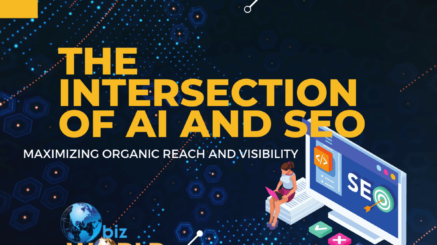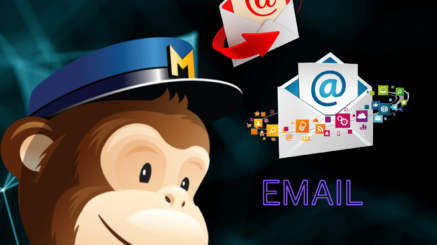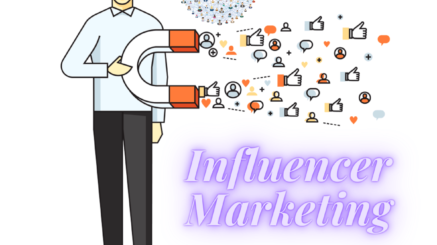“Unlocking Success: How AI-Powered Advertising Campaigns Revolutionize the Digital Landscape”
AI-powered advertising campaigns have revolutionized the way businesses promote their products and connect with their target audience. With the advancement of artificial intelligence (AI) technology, advertisers now have access to sophisticated tools and algorithms that can analyze vast amounts of data, optimize campaigns in real time, and deliver personalized experiences to consumers. In this article, we will explore the world of AI-powered advertising campaigns, understand how they work, and discover the benefits they bring to businesses in the digital age.

- “Unlocking Success: How AI-Powered Advertising Campaigns Revolutionize the Digital Landscape”
- Introduction: The Power of AI in Advertising
- Understanding AI-Powered Advertising
- Harnessing the Potential of AI-Powered Advertising
- AI-Powered Advertising Platforms and Tools
- Best Practices for Running AI-Powered Advertising Campaigns
- Challenges and Considerations in AI Advertising
- Future Trends and Innovations in AI Advertising
- Conclusion
- FAQs about AI-Powered Advertising
Introduction: The Power of AI in Advertising
In the era of digital marketing, AI-powered advertising campaigns have emerged as a game-changer for businesses seeking to maximize their advertising ROI and deliver personalized experiences to their audience. By leveraging the power of artificial intelligence and machine learning algorithms, advertisers can make data-driven decisions, automate campaign optimization, and create highly targeted and engaging advertisements.
AI-powered advertising campaigns go beyond traditional advertising methods by analyzing vast amounts of data, understanding consumer behavior, and adapting strategies in real time. This allows businesses to reach the right audience, at the right time, with the right message, resulting in improved customer engagement, higher conversion rates, and increased revenue.
But what exactly is AI-powered advertising, and how does it work? Let’s dive deeper and explore the fascinating world of AI in advertising campaigns.
Understanding AI-Powered Advertising
2.1 What is AI-Powered Advertising?
AI-powered advertising refers to the use of artificial intelligence and machine learning algorithms in advertising campaigns to automate processes, analyze data, and optimize campaign performance. It involves using AI technology to gather insights, make predictions, and deliver personalized content to target audiences.
By leveraging AI, advertisers can improve targeting precision, optimize bidding strategies, and deliver personalized experiences at scale. AI-powered advertising platforms utilize algorithms that learn from vast amounts of data to understand user behavior, identify patterns, and make predictions. This enables advertisers to create more effective and efficient campaigns that deliver the right message to the right audience.
2.2 The Role of Machine Learning in AI Advertising
Machine learning has a vital function in advertising empowered by artificial intelligence.. It is a subset of AI that focuses on developing algorithms that can learn from data and make predictions or take actions without explicit programming. In the context of advertising, machine learning algorithms analyze large datasets to identify patterns, optimize targeting, and predict user behavior.
By training machine learning models on historical campaign data, advertisers can gain insights into the performance of different ad creatives, audience segments, and bidding strategies. These models can then be used to automate decision-making processes and optimize campaign performance in real time. Machine learning algorithms can adapt and learn from new data, continuously improving campaign outcomes and driving better results over time.
2.3 Benefits of AI in Advertising Campaigns
AI-powered advertising campaigns offer numerous benefits for businesses aiming to reach their target audience effectively and achieve their marketing objectives. Here are some key benefits:
- Enhanced Targeting: AI algorithms can analyze vast amounts of data to identify relevant audience segments, understand their preferences, and target ads accordingly. This improves the accuracy and effectiveness of targeting strategies, leading to higher engagement and conversion rates.
- Real-Time Optimization: AI-powered advertising platforms can optimize campaigns in real time by analyzing performance metrics and making data-driven decisions. This ensures that ads are constantly adjusted to deliver the best possible results, maximizing ROI and campaign efficiency.
- Personalization at Scale: AI enables advertisers to deliver personalized experiences to individual users at scale. By leveraging data on user preferences, browsing behavior, and demographics, AI algorithms can create highly targeted and relevant ads that resonate with the audience, driving engagement and conversions.
- Cost Efficiency: With AI-powered advertising, businesses can optimize bidding strategies and allocate budgets more effectively. By automatically adjusting bids based on performance data and user behavior, advertisers can minimize wasted ad spend and achieve better cost efficiency.
In the next section, we will explore how businesses can harness the potential of AI-powered advertising by leveraging its capabilities throughout the different stages of an advertising campaign.
Harnessing the Potential of AI-Powered Advertising
AI-powered advertising offers a wide range of capabilities that can be leveraged to maximize the effectiveness and efficiency of advertising campaigns. Let’s delve into the key aspects of harnessing the potential of AI in advertising.
3.1 Data Collection and Analysis
Effective data collection and analysis are fundamental to the success of AI-powered advertising campaigns. Advertisers can leverage AI tools and platforms to gather data from various sources, including website analytics, customer relationship management (CRM) systems, and third-party data providers.
AI algorithms can analyze this data to extract valuable insights, identify trends, and understand consumer behavior. By leveraging these insights, advertisers can make data-driven decisions and optimize their campaigns for better performance.
3.2 Audience Segmentation and Targeting
AI-powered advertising allows for advanced audience segmentation and targeting. Advertisers can utilize machine learning algorithms to analyze user data and identify distinct segments based on demographics, interests, browsing behavior, and purchase history.
Advertisers can develop customized advertising campaigns tailored to specific audience segments by comprehending their distinct attributes. This enables the campaigns to effectively connect with each group. AI algorithms can automatically identify the most relevant audience segments for a particular campaign and optimize targeting strategies accordingly.
3.3 Personalization and Dynamic Creative Optimization (DCO)
Personalization is a key element in successful advertising campaigns, and AI-powered advertising enables businesses to deliver personalized experiences at scale. AI algorithms can analyze user data and preferences to dynamically generate personalized ad creatives, messages, and offers.
Dynamic Creative Optimization (DCO) is a technique used in AI-powered advertising that enables the automatic generation and optimization of ad creatives in real time. By tailoring ads to each user based on their preferences and behavior, DCO improves engagement and conversion rates.
3.4 Real-Time Bidding and Programmatic Advertising
Real-time bidding (RTB) and programmatic advertising are integral components of AI-powered advertising campaigns. RTB allows advertisers to bid for ad placements in real-time auctions, maximizing the chances of reaching the target audience.
Programmatic advertising, powered by AI algorithms, automates the buying and selling of ad inventory across various digital platforms. It streamlines the ad-buying process, making it more efficient and cost-effective. Programmatic advertising platforms leverage AI to analyze bidding data, optimize campaign performance, and deliver ads to the most relevant users.
By leveraging real-time bidding and programmatic advertising, businesses can ensure that their ads are delivered to the right users at the right time, maximizing the impact of their campaigns.
In the next section, we will explore some popular AI-powered advertising platforms and tools that businesses can leverage to drive their advertising campaigns.
AI-Powered Advertising Platforms and Tools
Several leading platforms and tools offer AI-powered capabilities for businesses to run their advertising campaigns. Let us examine a few of the notable ones:
4.1 Google Ads
Google Ads is one of the most widely used platforms for AI-powered advertising. It offers a range of AI-driven features, including automated bidding strategies, responsive search ads, and smart display campaigns. Google’s machine learning algorithms analyze vast amounts of data to optimize bidding, ad placement, and targeting, maximizing the performance of campaigns.
4.2 Facebook Ads
Facebook Ads provides advertisers with powerful AI-driven features for audience targeting and campaign optimization. The platform leverages user data and machine learning algorithms to identify the most relevant audience segments and deliver personalized ads. Facebook’s AI algorithms also optimize ad delivery and bidding strategies to maximize campaign performance.
4.3 Amazon Advertising
Amazon Advertising utilizes AI technology to optimize product targeting, bidding, and ad placements on the Amazon marketplace. Its algorithms analyze consumer behavior, search patterns, and purchase history to deliver highly relevant and personalized ads to shoppers. By leveraging Amazon Advertising, businesses can effectively promote their products and reach millions of potential customers.
4.4 Ad Exchanges and Demand-Side Platforms (DSPs)
Ad exchanges and demand-side platforms (DSPs) are platforms that facilitate programmatic advertising and enable advertisers to access a wide range of ad inventory across multiple publishers. These platforms leverage AI algorithms to analyze bidding data, optimize campaign performance, and deliver ads to the most relevant users.
By leveraging AI-powered advertising platforms and tools, businesses can tap into the full potential of AI to optimize their campaigns and drive better results. However, running successful AI-powered advertising campaigns requires adherence to best practices and strategic considerations.
Best Practices for Running AI-Powered Advertising Campaigns
To ensure the success of AI-powered advertising campaigns, businesses should follow these best practices:
5.1 Define Clear Campaign Goals and KPIs
Before launching an AI-powered advertising campaign, it is crucial to define clear goals and key performance indicators (KPIs). Whether the objective is to drive website traffic, generate leads, increase sales, or boost brand awareness, having specific goals in mind will guide the campaign strategy and allow for better measurement of success.
5.2 Choose the Right AI-Powered Advertising Platform
Selecting the right AI-powered advertising platform is essential for campaign success. Consider factors such as the platform’s targeting capabilities, data analysis capabilities, ease of use, and compatibility with your business goals. Evaluate multiple platforms and choose the one that aligns best with your campaign objectives and target audience.
5.3 Optimize Targeting and Segmentation Strategies
AI-powered advertising campaigns excel in their ability to target and segment audiences effectively. Take advantage of this by refining your targeting strategies and leveraging the insights provided by AI algorithms. Continuously monitor campaign performance and adjust targeting parameters to optimize results.
5.4 Continuously Monitor and Optimize Campaign Performance
AI-powered advertising campaigns require ongoing monitoring and optimization to achieve the best results. Regularly review campaign performance metrics, such as click-through rates, conversion rates, and return on ad spend (ROAS). Use these insights to make data-driven optimizations and improve the effectiveness of your campaigns over time.
By following these best practices, businesses can harness the full potential of AI-powered advertising campaigns and achieve their marketing goals more effectively.
Challenges and Considerations in AI Advertising
While AI-powered advertising brings numerous benefits, it also presents challenges and considerations that businesses should be aware of:
6.1 Privacy and Data Protection
AI-powered advertising relies heavily on data collection and analysis. Businesses must prioritize data privacy and comply with applicable regulations, such as the General Data Protection Regulation (GDPR). Transparency in data collection and user consent are crucial aspects of maintaining trust with consumers.
6.2 Ethical Implications of AI in Advertising
AI algorithms make decisions based on patterns and data, which can introduce biases or unintended consequences. Businesses must ensure that AI-powered advertising campaigns are ethically sound and do not discriminate against or mislead users. Regular monitoring and testing can help identify and mitigate any ethical concerns.
6.3 Balancing Automation with Human Creativity
While AI can automate various aspects of advertising campaigns, it is essential to strike a balance between automation and human creativity. Human creativity, strategic thinking, and emotional intelligence remain invaluable assets in crafting compelling ad campaigns that resonate with the audience.
Consider these challenges and strike a balance between automation and human creativity to maximize the effectiveness and ethical implications of AI-powered advertising.
Future Trends and Innovations in AI Advertising
The field of AI advertising is continuously evolving, with new trends and innovations shaping the industry. Here are some emerging trends to watch out for:
7.1 Voice-Activated Advertising
With the rise of smart speakers and voice assistants, voice-activated advertising presents a new frontier for AI-powered campaigns. Advertisers can leverage voice technology to engage with consumers in a more conversational and personalized manner, opening up new opportunities for brand interactions.
7.2 Augmented Reality (AR) and Virtual Reality (VR) Ads
AR and VR technologies have gained traction in recent years, offering immersive and interactive experiences. AI-powered advertising can leverage these technologies to create engaging AR and VR ads that allow users to interact with products virtually, bringing a new level of engagement to advertising campaigns.
7.3 AI-Powered Chatbots and Conversational Marketing
Chatbots and conversational marketing have become increasingly popular in customer interactions. AI-powered chatbots can deliver personalized recommendations, answer customer queries, and assist in the buyer’s journey. Integrating AI-powered chatbots into advertising campaigns can enhance customer experiences and drive engagement.
As AI technology continues to advance, these trends and innovations will shape the future of AI-powered advertising, presenting businesses with exciting opportunities to connect with their audience in new and impactful ways.
Conclusion
AI-powered advertising campaigns have transformed the advertising landscape, enabling businesses to optimize their campaigns, deliver personalized experiences, and reach their target audience more effectively. By harnessing the power of AI, businesses can enhance targeting precision, optimize bidding strategies, and drive better results.
With the rise of AI-powered advertising platforms and tools, businesses have access to sophisticated technologies that can analyze
vast amounts of data, automate processes, and optimize campaign performance in real-time. However, running successful AI-powered advertising campaigns requires strategic considerations, continuous monitoring, and optimization.
As businesses embrace AI-powered advertising, it is important to address challenges such as data privacy, ethical implications, and the balance between automation and human creativity. By staying informed about emerging trends and innovations in AI advertising, businesses can stay ahead of the curve and leverage the latest advancements to connect with their audience in meaningful ways.
So, embrace the power of AI in advertising, unlock its potential, and boost your company to greater heights in the era of digitalization!
FAQs about AI-Powered Advertising
9.1 How does AI improve advertising campaign performance?
AI improves advertising campaign performance by leveraging data analysis, machine learning algorithms, and automation. It enables precise audience targeting, optimization of bidding strategies, and personalized ad delivery, resulting in higher engagement and conversion rates.
9.2 Can AI replace human creativity in advertising?
While AI can automate various aspects of advertising campaigns, human creativity remains a crucial element in crafting compelling and impactful ads. AI complements human creativity by providing data-driven insights and optimizing campaign performance, but it cannot fully replace the creativity and strategic thinking of human marketers.
9.3 Is AI advertising only suitable for large businesses?
AI advertising is suitable for businesses of all sizes. With advancements in technology and the availability of AI-powered advertising platforms, businesses of any scale can leverage AI to enhance their advertising campaigns and reach their target audience more effectively.
9.4 What are the potential risks of AI-powered advertising?
Potential risks of AI-powered advertising include data privacy concerns, ethical implications, and the need to strike a balance between automation and human creativity. Advertisers must prioritize data protection, comply with regulations, and ensure that AI-powered campaigns are ethically sound and do not discriminate against or mislead users.
9.5 How can businesses get started with AI-powered advertising?
To get started with AI-powered advertising, businesses should define clear campaign goals, choose the right AI-powered advertising platform, and optimize their targeting and segmentation strategies. It is important to continuously monitor and optimize campaign performance based on data-driven insights. Consulting with AI advertising experts or agencies can also provide guidance and support in implementing effective AI-powered advertising campaigns.



